The first attribute a good boat must have is its ability to stay afloat. It is the nature of a boat to want nothing more than to rest comfortably at the bottom of whatever body of water it happens to be bobbing in. If water doesn't get in through holes in the bottom, it will through leaks in the deck, cockpit, ports, hatches, mast, ventilators and so on.
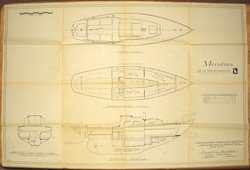 More to the point, if a boat has a cabin or cuddy then it's really important it remains mostly dry - there has to be some refuge from the weather if only to give you a place of calm and dry in which you can gather your wits before continuing your pitched battle with the sea.
More to the point, if a boat has a cabin or cuddy then it's really important it remains mostly dry - there has to be some refuge from the weather if only to give you a place of calm and dry in which you can gather your wits before continuing your pitched battle with the sea.Beyond floating and staying dry the rest is all taste and gravy. Here's where opinions of a good boat split.
If you we
 re to hunt for your perfect boat, where would you start? When I decided Mudlark, my Rhodes Meridian, was too small for comfortable cruising, I thought, based on Mudlark's sweet handling, forgiving design, and beautiful lines that I wanted a boat just like her, but bigger. Mudlark's characteristics came from a full keel with a large attached rudder, low aspect ratio mainsail, and relatively small jib, classic CCA rules design. With tiller steering she was pretty maneuverable and could be balanced with sail to hold a course without hanging onto the tiller. Although she was tender and wet while sailing, below was dry, mostly. She had a lot of room for a 25' boat.
re to hunt for your perfect boat, where would you start? When I decided Mudlark, my Rhodes Meridian, was too small for comfortable cruising, I thought, based on Mudlark's sweet handling, forgiving design, and beautiful lines that I wanted a boat just like her, but bigger. Mudlark's characteristics came from a full keel with a large attached rudder, low aspect ratio mainsail, and relatively small jib, classic CCA rules design. With tiller steering she was pretty maneuverable and could be balanced with sail to hold a course without hanging onto the tiller. Although she was tender and wet while sailing, below was dry, mostly. She had a lot of room for a 25' boat.A funny thing happened in my search for a new boat. I looked at several boats with full keels and attached rudders, with low aspect mainsails, with beautiful and jaunty lines like Mudlark such as Alberg 35s, Camper Nicholsons, Southern Crosses and so forth. But what I ended up with was as much a surprise for me as it was for my friends.
A Ranger 30, Wind Hawk, with a fin keel, balanced fin rudder, IOR design, with
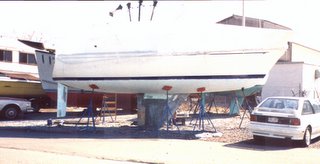 a fine and flat entry, mostl flat aft sections, low aspect main and huge foresails. It had 4,300 lbs of lead in the form of a 'shoe' at the bottom of the keel on a 10,000 lb boat, and so was very stiff. She carried her beam aft of the mast and tapered fairly quickly towards the stern. From above she looked tear-drop shaped.
a fine and flat entry, mostl flat aft sections, low aspect main and huge foresails. It had 4,300 lbs of lead in the form of a 'shoe' at the bottom of the keel on a 10,000 lb boat, and so was very stiff. She carried her beam aft of the mast and tapered fairly quickly towards the stern. From above she looked tear-drop shaped.Yet, for all it's weight, it sailed very well in light air and very well in heavy, but was mediocre in the typical airs found in the Hudson and Long Island Sound - from 10-18kts.
That said, she was twitchy - there was no way to balance the sails and helm so she could self steer like Mudlark could. She could, however, turn around in her own length. When I first acquired her, she had a serious lee helm, meaning that rather than pointing into the wind when the tiller was released (weather helm), she'd merrily sail downwind. My friend at Samalot Marine, George Samalot, pointed out that I needed to move the power aft in the boat.
This problem was solved with three steps. First, I moved the mast foot forward as far as the adjusting plate would allow which gave the mast a aft rake. Second, using the forward lower shrouds, I put pre-bend into the mast, and finally, I replaced the shelf-foot main with a loose-footed main George built so that I could really add draft to it and bring power back. It was not unusual for me to sail with two feet of draft.
Compared to Mudlark, though, the difference was like night and day. Mudlark was a family sedan, Wind Hawk was a sports car. Also with the higher freeboard I could sail comfortably and dryly in much worse seas and weather than Mudlark would allow.
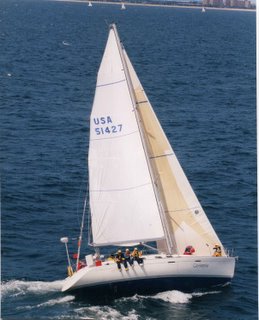 My friend Laura's boat is a Beneteau 42.7 which is very much an update on the IOR designs, with nearly vertical bow, very flat aft sections, and carrying the beam for much farther aft, almost to the transom. This makes her very bouyant aft and it is not difficult to surf the boat in the right conditions. She's fast and comfortable to sail, fairly easy to maneuver, and as you see, a fine looking vessel.
My friend Laura's boat is a Beneteau 42.7 which is very much an update on the IOR designs, with nearly vertical bow, very flat aft sections, and carrying the beam for much farther aft, almost to the transom. This makes her very bouyant aft and it is not difficult to surf the boat in the right conditions. She's fast and comfortable to sail, fairly easy to maneuver, and as you see, a fine looking vessel.Cassiopeia is light for her size, as are most all Beneteaus. She is cavernous below, and has all the amenities you'd expect. She has the three cabin layout with two heads.
She's been in the ocean racing and cruising and has stood up well to it. This says alot about the engineering and construction at Beneteau.
Because she's light, sail area gets reduced early and often. Although it doesn't look like it, in the picture, she's overpowered.
My current boat, Inertia, is an Ericson 34, as has been mentioned. Let's look at her b
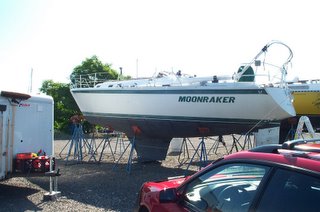 ottom and see where she fits in the spectrum. As you can see, Inertia's underside is very different from Wind Hawk's or Cassiopeia's - not particularly flat aft, beam starts around the mast and carries quite far aft, but then narrows at the transom. This gives her great heeling stability, but with the fine ends, less bouyancy forward and aft. In addition because the aft section isn't too flat, there's no surfing this boat. She's designed primarily for upwind to broad reach sailing.
ottom and see where she fits in the spectrum. As you can see, Inertia's underside is very different from Wind Hawk's or Cassiopeia's - not particularly flat aft, beam starts around the mast and carries quite far aft, but then narrows at the transom. This gives her great heeling stability, but with the fine ends, less bouyancy forward and aft. In addition because the aft section isn't too flat, there's no surfing this boat. She's designed primarily for upwind to broad reach sailing.You'll notice the wing keel. It doesn't significantly reduce the total draft, and when heeled, actually increases it. But what it does do is help keep the boat from bouncing in chop and provides enhanced lift when sailing to windward.
Finally, Herb & Gina's boat, a Passport 40, is a full-out world cruiser. It has a modified full keel with skeg mounted rudder. It's heavy, strong boat that can carry an impressive amount of canvas. I don't have a picture of her that would help here so you'll have to wait until I get one...
Anyway, each of these boats has their own pluses and minuses. Here, you'll have to decide what's important to you and what you can live with. Take into account where and what kind of sailing you'll do. But I'll give you some of my insight.
First, because I primarily singlehand, I need to have the controls near the helm, such as the main sheet, traveler, jib sheet and jib car control lines. In addition, because I have to stay safe or that's the end of the story for me and the boat, below has to have a lot of handholds, and not too many sharp edges to hit.
Beyond that, there are comfort level items that I appreciate.
- If you have an auxiliary inboard engine, your best bet is a diesel. They're easy to maintain, safe, fuel efficient.
- It's lovely but not strictly necessary to have hot and cold running water. I have it.
- The head should be somewhere near the middle of the boat, facing fore and aft preferrably with good support on either side.
- The bilge should be easily accessable and of sufficient volume to hold the water that comes aboard from rain and sailing (if any) for several days before wetting the floorboards.
- There should be good ventilation.
- When below, you should have a feeling of confidence, security, and comfort. Sleeping arrangements should be secure if necessary.
- There should be an autopilot or the boat should be able to self steer for short periods of time reliably.
- There should be many strong handholds or clip holds for harnesses wherever you spend time topsides.
The two most important factors that you really cannot change are how the boat handles the sea and how you are going to use the boat. If it's going to be your vacation home or back porch on the water then your needs are going to be different from mine. If you entertain a lot and you motor when the wind gets above 12 knots, then any of the modern production boats will probably suffice. Hunter and Catalina jump to mind. For all their engineering, they, in my opinion, are not good offshore boats and somewhat scary in rough weather. Yes, you can do it. You can row across the Atlantic, too. But would you want to?
The Beneteau Oceanis line of boats are similar - they're really for entertaining, with typically conservative sails and large motors. They have drink holders and fold down seating and so forth. They also have a great big table in the middle of the cockpit. If you're on your own, it is guaranteed to always be in the way.
If, on the other hand, like me, you need to get around on deck, you don't need that stuff.
Next, the size of the cockpit is moderately important, both from a control and 'pooping' point of view. Since most of us are coastal sailors, cockpit drainage is not that important. But having an 8' long one where you have to put the boat on autopilot to manage the sails is not the best of configurations. One of the things I loved about Wind Hawk was the small cockpit, barely 5' long with the main sheet traveler on the bridge deck. I could sit at the tiller and reach all the lines.
Until I moved the traveler on Inertia, it was always a problem managing the main. I'd need the autopilot just to move the traveler since it was unreachable otherwise.
You wouldn't like a car where the gas was in the passenger side of the car, and the brake in the back seat and so forth - the same thing goes here.
So when looking at your boat, think what would make handling it easier. With some dollars and sweat, you can probably make it happen.
I'd be interested to know what other people think makes their boat a good boat.
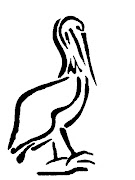

No comments:
Post a Comment